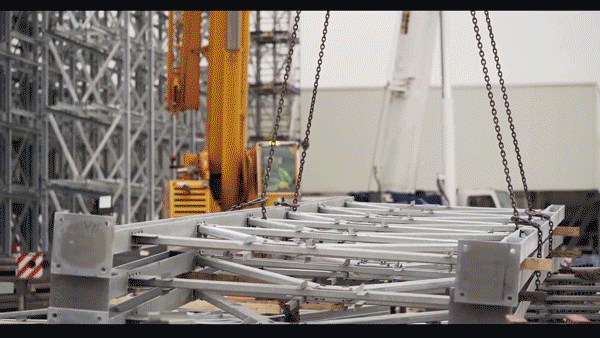Choosing Between Agile and Waterfall: Finding the Right Project Management Methodology

Introduction:
Agile and Waterfall stand as two prominent project management methodologies, each offering distinct advantages depending on the nature of the project. Understanding the differences between them is crucial for determining which approach aligns best with your project's goals and requirements.
Agile Methodology Overview:
Agile methodology, conceived as a response to Waterfall's rigid structure, fosters flexibility and adaptability in project management. Unlike the linear progression of Waterfall, Agile encourages concurrent work on multiple project phases, emphasizing frequent stakeholder interaction and short-term deadlines. With Agile, the team holds the reins, driving project direction and embracing changes in real-time.
Pros and Cons of Agile:
Pros:
Encourages productivity and efficiency through short-term deadlines.
Flexibility to change project direction and experiment with new ideas.
Client-facing approach facilitates feedback incorporation throughout the process.
Cons:
Potential for overlap or wasted effort due to simultaneous work on multiple phases.
Difficulty in ensuring team alignment, especially in larger teams.
Uncertainty in project timeline and susceptibility to changes.
Waterfall Methodology Overview:
Waterfall methodology offers a linear project management approach, ideal for projects with clearly defined goals from inception. It mandates completing each phase before progressing to the next, providing a structured framework for project execution.
Pros and Cons of Waterfall:
Pros:
Provides a concrete plan of the project from start to finish.
Early establishment of project requirements saves time.
Structured workflow with deliverables required for each phase progression.
Cons:
Longer project duration due to sequential phase completion.
Challenges in identifying issues after progressing to subsequent phases.
Limited flexibility and potential disagreement among stakeholders if project vision diverges.
Comparison:
Timeline:
Waterfall adheres to a fixed timeline predetermined from project commencement, while Agile embraces flexibility, adapting the schedule as the project evolves.
Client Involvement:
Waterfall typically involves clients only at specific checkpoints, whereas Agile prioritizes continuous client engagement throughout project development.
Flexibility:
Waterfall's rigid structure contrasts with Agile's adaptability, which welcomes changes and experimentation, even in later stages.
Budget:
Waterfall projects often operate within fixed budgets, whereas Agile allows for more flexibility, accommodating changes and iterations.

Choosing the Right Methodology:
Considerations such as project requirements, stakeholder involvement, and the need for flexibility guide the choice between Agile and Waterfall. Projects with well-defined outcomes and strict regulations may lean towards Waterfall, while Agile suits scenarios requiring adaptability, experimentation, and frequent stakeholder collaboration.
Conclusion:
In conclusion, Agile and Waterfall methodologies serve distinct purposes, catering to varying project needs and dynamics. Understanding the strengths and limitations of each methodology enables project managers to make informed decisions, ensuring alignment between project goals and management approach.
China does not yet appear to be leading in robotic innovation, but its domestic production and adoption are growing rapidly.
CEO Rick Faulk discusses the company’s new software, the state of the industry and the future of humanoids.
NVidia's recent unveiling of the H100 GPU promises to redefine the capabilities of AI and ML workloads
By breaking an intractable problem into smaller chunks, a deep-learning technique identifies the optimal areas for thinning out traffic in a warehouse.
Jeff Bezos sat down for an extensive and wide-ranging discussion with Lex Fridman about his life, work, the future of humanity and what’s next for technology
Bank of France’s new banknote printing facility.
Marc Raibert is founder and former long-time CEO of Boston Dynamics.
Learn how Orbit helps you understand fleet performance and equipment health in the context of your facility.
Had AI not been used in that instance, it would have taken the entire federal workforce to piece the puzzle together .
Which Project Management Methodology Is Best For You?
The system learns from human behavioral patterns and carries out these instructions set by the human operator.
Bloomberg journalists Jackie Davalos and Nate Lanxon take a deeper dive into AI and find out how it's changing every aspect of our existence.
At the heart of AI and machine learning lies data - the indispensable fuel that powers these technologies.
In the past year, countless AI-infused products and services have become available, offering a dizzying variety of features frequently wrapped in hard-to-discern jargon.
Digit + Large Language Model = Embodied Artificial Intelligence
Almost all organizations in the U.S. will be AI-enabled. According to the report, 92% of the organizations surveyed plan to use AI-powered solutions by 2028.
Agility CEO Damion Shelton talks about the hierarchy of robot control and draws similarities to the process of riding a horse.
One of the main areas of application of AI and machine learning is in solving increasingly complex planning and design objectives.
Robots that can fit multiple items into a limited space could help pack a suitcase or a rocket to Mars
Government safety inspectors say a number of tasks could be safer if partially automated.
The new solutions, called Multi-Channel Distribution, will allow sellers to replenish all their sales and fulfillment channels from a single inventory pool.
Nike Korea joins forces with Doosan Logistics Solutions for a groundbreaking logistics partnership.
What does Giant Food’s shift say about the future of grocery delivery?
Critics may argue that Ocado should have moved sooner, after a major push by delivery apps Deliveroo and Uber Eats into grocery.
WSJ’s Dalvin Brown explains how some companies are leveraging gig workers to make those returns for you.
As robots work alongside people at Florida facility, some workers gain weight, some like having less physical stress.
The e-commerce landscape is evolving rapidly, with emerging players like TikTok, Shein, and Temu gaining traction and disrupting the market.
The $84.5 million facility is designed to further strengthen the company’s connections and service capabilities between the U.S. and key global markets
Coca-Cola Canada is making a groundbreaking robotic automation investment in Canada.






























